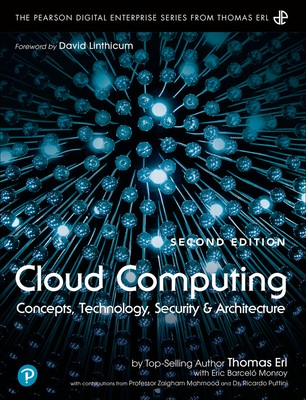
- We will send in 10–14 business days.
- Author: Thomas Erl
- Publisher: Pearson
- ISBN-10: 0138052255
- ISBN-13: 9780138052256
- Format: 17.9 x 23.1 x 3.2 cm, minkšti viršeliai
- Language: English
- SAVE -10% with code: EXTRA
Reviews
Description
Clouds are distributed technology platforms that leverage sophisticated technology innovations to provide highly scalable and resilient environments that can be remotely utilized by organizations in a multitude of powerful ways. To successfully build upon, integrate with, or even create a cloud environment requires an understanding of its common inner mechanics, architectural layers, and models, as well as an understanding of the business and economic factors that result from the adoption and real-world use of cloud-based services.
In Cloud Computing: Concepts, Technology & Architecture, Thomas Erl, one of the world's top-selling IT authors, teams up with cloud computing experts and researchers to break down proven and mature cloud computing technologies and practices into a series of well-defined concepts, models, technology mechanisms, and technology architectures, all from an industry-centric and vendor-neutral point of view. In doing so, the book establishes concrete, academic coverage with a focus on structure, clarity, and well-defined building blocks for mainstream cloud computing platforms and solutions.
EXTRA 10 % discount with code: EXTRA
The promotion ends in 23d.20:58:40
The discount code is valid when purchasing from 10 €. Discounts do not stack.
- Author: Thomas Erl
- Publisher: Pearson
- ISBN-10: 0138052255
- ISBN-13: 9780138052256
- Format: 17.9 x 23.1 x 3.2 cm, minkšti viršeliai
- Language: English English
Clouds are distributed technology platforms that leverage sophisticated technology innovations to provide highly scalable and resilient environments that can be remotely utilized by organizations in a multitude of powerful ways. To successfully build upon, integrate with, or even create a cloud environment requires an understanding of its common inner mechanics, architectural layers, and models, as well as an understanding of the business and economic factors that result from the adoption and real-world use of cloud-based services.
In Cloud Computing: Concepts, Technology & Architecture, Thomas Erl, one of the world's top-selling IT authors, teams up with cloud computing experts and researchers to break down proven and mature cloud computing technologies and practices into a series of well-defined concepts, models, technology mechanisms, and technology architectures, all from an industry-centric and vendor-neutral point of view. In doing so, the book establishes concrete, academic coverage with a focus on structure, clarity, and well-defined building blocks for mainstream cloud computing platforms and solutions.


Reviews